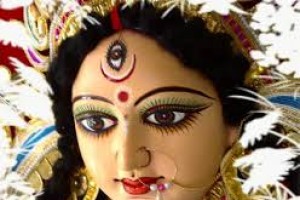Fasting Rules during Navratri
This
festival occurs twice a year , each time when the season is at the brink of
change from winter to summer and again when the air starts to get a bit chilly.
Coincidentally
this is also the time when our immunity is low and it is advisable to eat light
and nutritious food.
Onion and
garlic are avoided while fasting as from an ayurvedic perspective these foods
attract and absorb negative energy and should be avoided during a seasonal
change. This as a period of Fasting enables us to detoxify our body. It also
eliminates gas, lightens the body, improves mental clarity. It also helps the
body desalt itself.
The same
fasting rules apply for fasts during the
Ekadashi , Janamashtmi and
Mahashivratri
Foods you can eat during fast
Kuttu ka atta – you can make pakora , poori ,halwa
with this atta.
Sama ke chawal – you can use to make uttapam, tikki,
poori.
Singhare ka atta – you can make halwa, poori, pakoras
of this atta.
Sabudana – used in making khichdi, vadas,
kheer ladoos,
Makhana –you can make kheer, roasted
makhanas, sabzi
All varieties of available fruits.
Spices and herbs allowed on navratra
fast
Rock salt
(saindha namak ).
Black pepper
powder.
Cumin or
cumin powder.
Green
cardamom (chhoti eliachi).
Anardana
(pomegranate seeds).
Ginger,
lemon, green chilly.
Ajwain/
carom seeds.
Coriander powder, red chilly, kala
namak, amchoor, coriander leaves, mint leaves . Some folks include and some do not
.
Vegetables allowed in navratra
Potatoes –
you can make tikki ,jeera aloo , Halwa,chips etc.
Petha – can
make halwa, sabzi .
Sweet potato
– tikki ,chaat.
Raw banana –
you can make sabzi ,chips.
Tomatoes –
chutney, in vegetables .
Some folks also use lauki , cucumber,
carrot.
All milk
products like paneer , curd ,white butter, cream , ghee , khoya , malai can be
use ; but all should be preferably home
made during fasting .
Sugar, honey,
gur .
Coconut –
you can use coconut in your dishes like ladoos ,halwa, chutney .
Peanuts –
peanut or ground nut oil for frying and ghee for all dishes.
Foods to be avoided –
Onion and
garlic are strictly avoided.
No lentils
and legumes.
Common salt.
Turmeric ,
hing, mustard, fenugreek seeds, garam masala, dhania powder.
Non
vegetarian food like eggs, meat,chicken,fish.
Alcohol, smoking.
Coffee.
Icecream
from outside,
Corn, flex seeds,
oats ,
Oil made
from seeds like sunflower oil.
All types of
grains and flours like sooji ,wheat,
maida, besan,
Navratra vrat vidhi & Puja :
First of all
clean the house as you are inviting the Goddess mother in your house. Specially clean your temple and sprinkle
ganga water in it.
It is better
to keep fast on last two days instead of first and last day of navratra.
Because if
you do fast on first day then you start
eating all foods from second day onward.
Many people
grow barley seeds during this period. For this they collect , clean mud from an
auspicious or clear place. This mud is
put in a earthen pot. Clean and wash the barley to remove any insects or
impurities and soak them in water for 15-30 minutes and then put these barleys
or jau on the top of the mud. Make a thin layer of mud on top of barley so as
to cover it. Do not put too much mud otherwise barley will not grow and put
just enough water to soak the barley. On the last day of navratra the khetri is
immersed in moving water body like river or even a pond. If there is no water body nearby to your
house then you can put the khetri under peepal tree in a temple. One diya or
lamp is burned throughout the 9 days .It is Akhand jyoti. This jyoti will
destroy all the negativity in your house. Along this , one mature coconut is
kept in the house temple.
Many
families do kanya pujan on 8
th or 9th day. In the kanya
pujan nine girls who have not reached the puberty stage are worshiped.
You should
chant mantras – “
Om Aaim heem klim
chamundaye vichche “
108 times in
the morning and evening.
Jai mata
di
Dr. Suman Setia BAMS DNHE
Also click to see:

